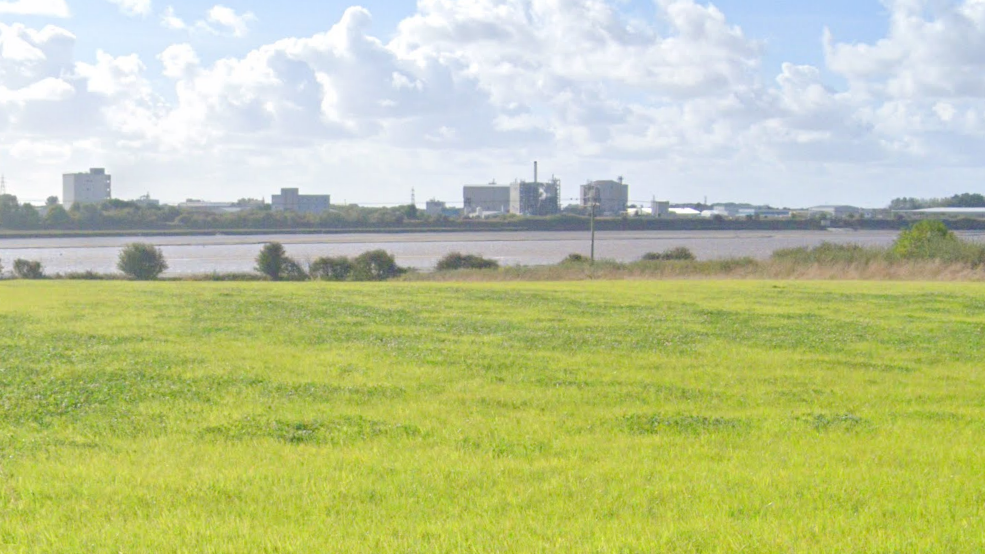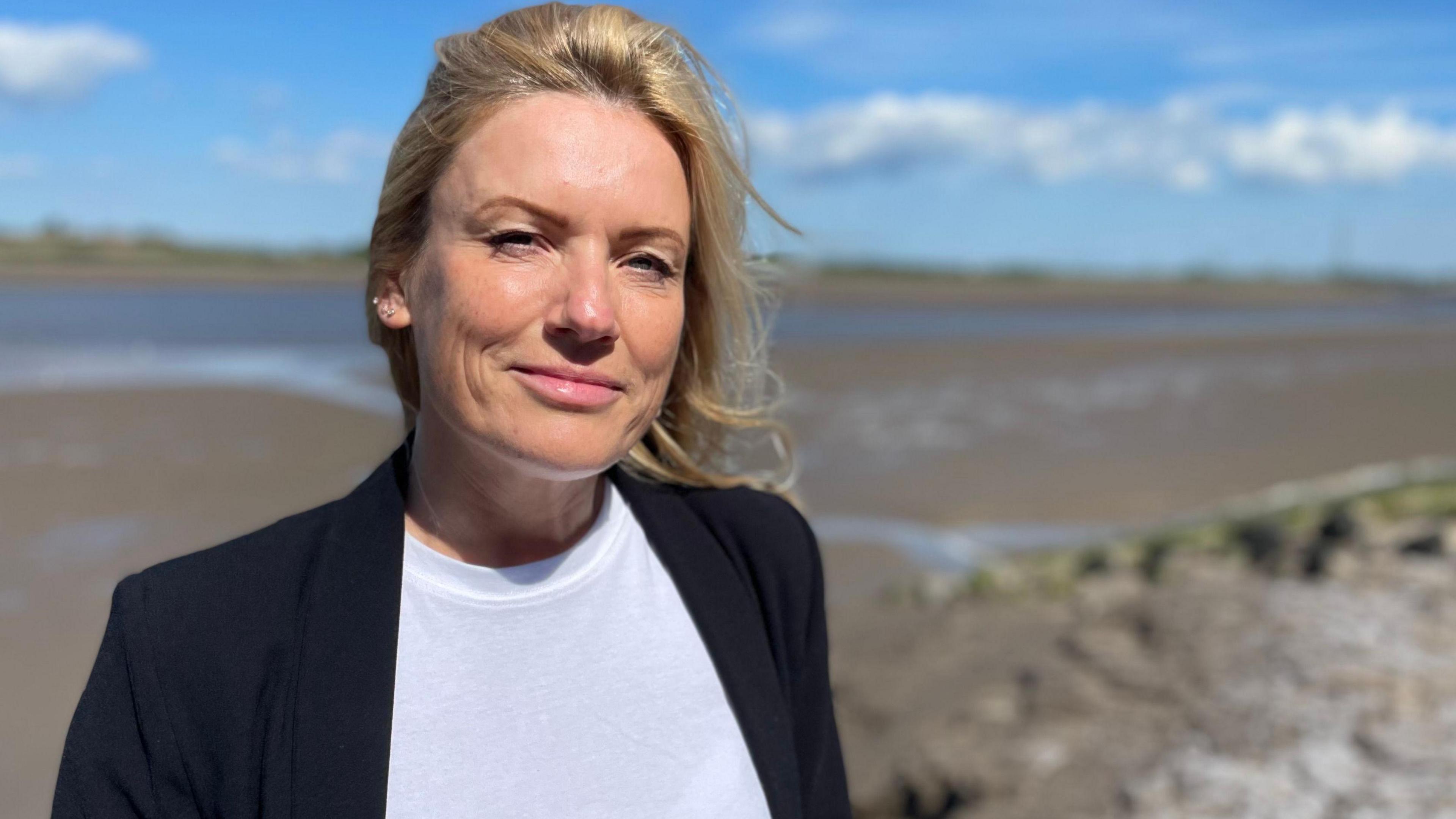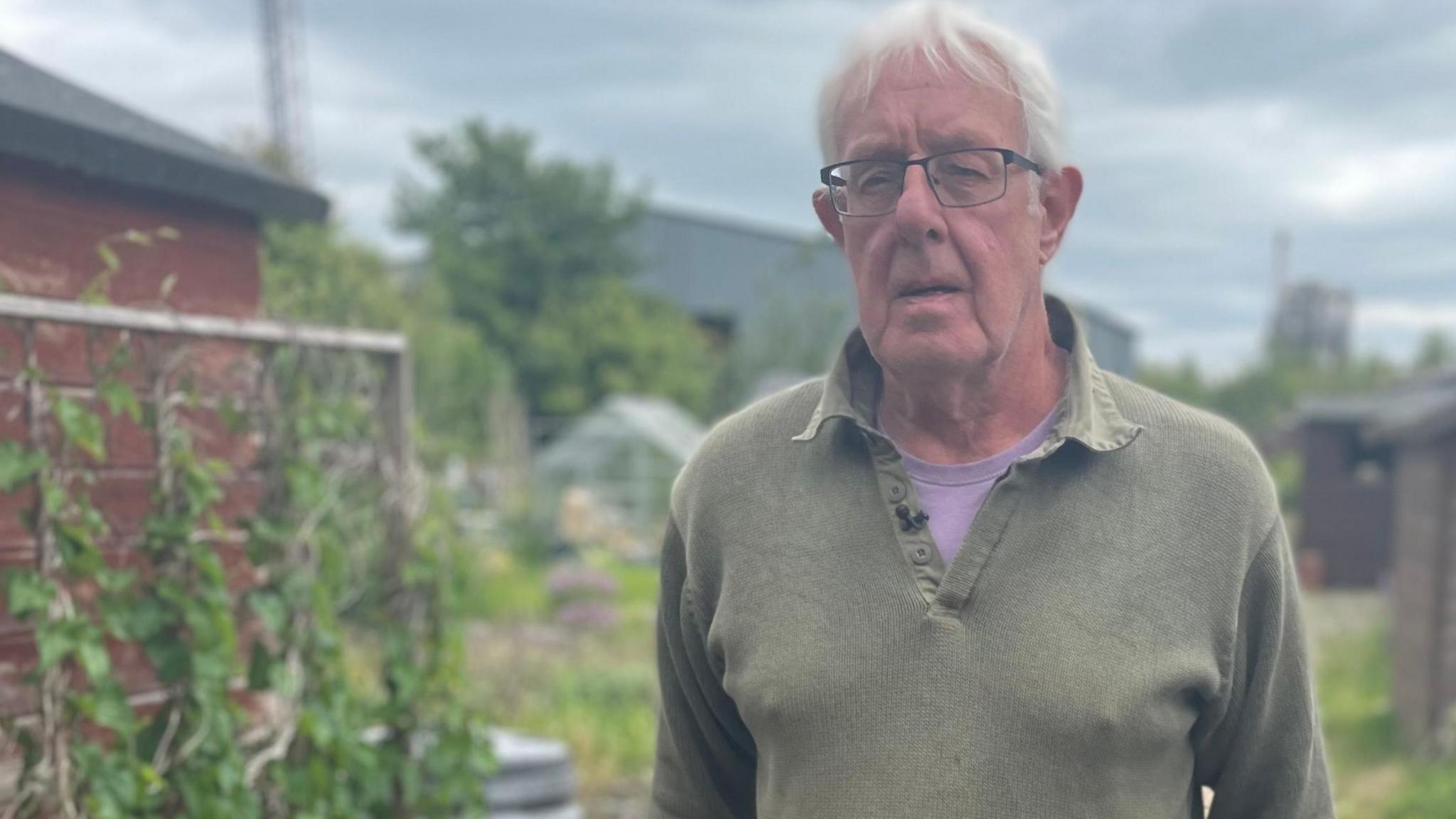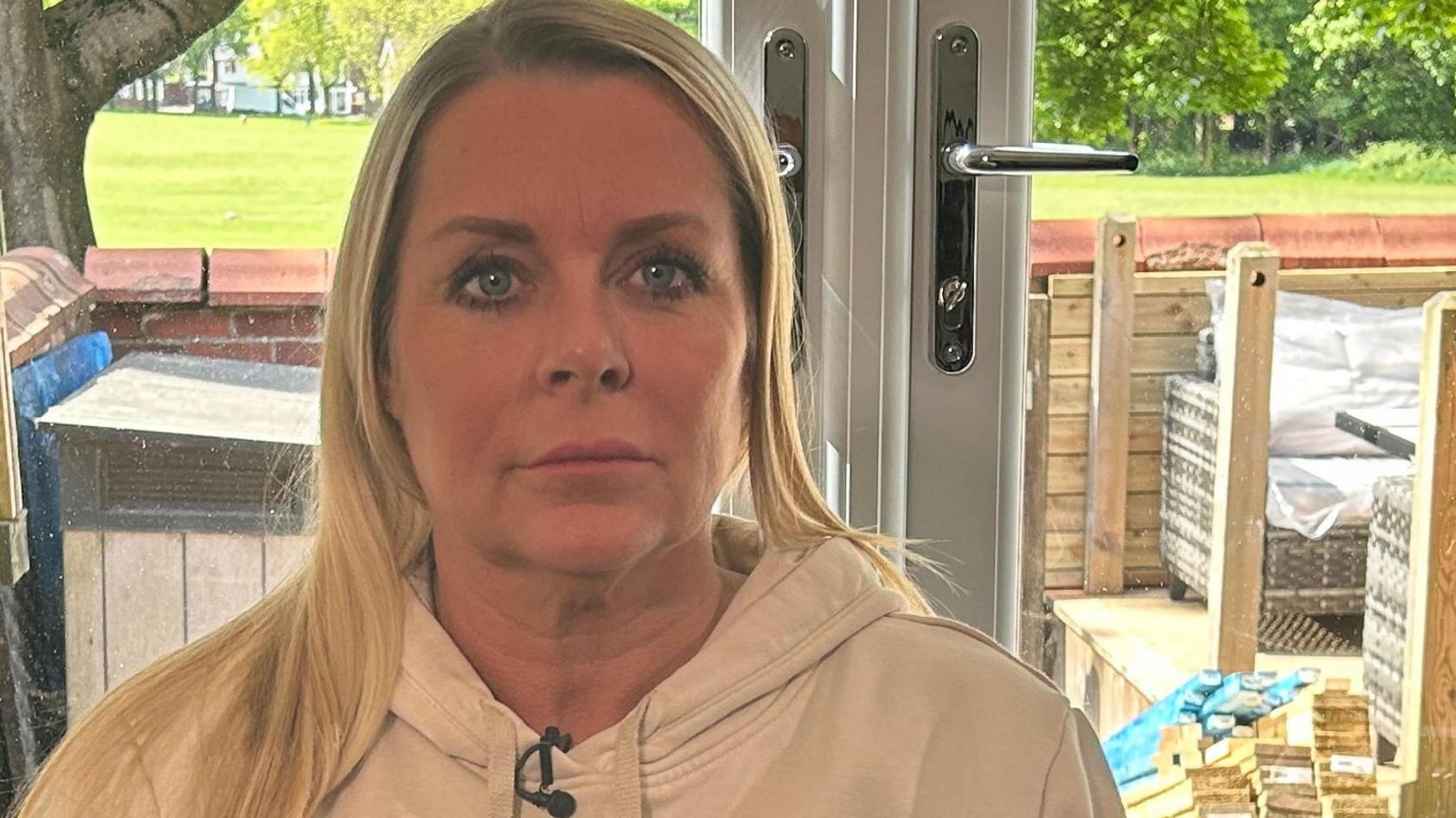Cancer fears in shadow of 'forever chemical' plant

Stephen Copson, 72, says he fears living close to the chemical plant took a toll on his health
- Published
Stephen Copson had always looked after himself, water-skiing on the River Wyre in Lancashire in his 20s and trying to eat healthily by growing his own vegetables in his garden.
But in 2016, his life changed for ever when he was diagnosed with aggressive prostate cancer, and since then has had five different cancer diagnoses.
Mr Copson, now 72, does not know what caused his cancers, and an expert told the BBC there was no way to link a specific substance to a cancer in an individual.
But the possibility that living close to a huge chemical plant was in some way to blame is never far from Mr Copson's mind.
Last year he was one of about 6,000 people who were advised by Wyre District Council not to eat fruit and vegetables grown in the local soil over concerns about the levels of a potentially carcinogenic substance in the ground near to the AGC Chemicals Europe plant in Thornton.
AGC Chemicals Europe – which took over part of the plant from ICI – said it had stopped using Perfluoroalkyl and Perfluorooctanoic acid (PFOA) in 2012, and that 40 years of monitoring showed no "significant impact" from emissions.
Wyre District Council said it cannot be certain of any links with ill-health, and had "advised a 'better safe than sorry' approach to eating home grown produce".

The Hillhouse chemical plant in Thornton produced so-called 'forever chemicals' until 2012
Cancer rates in the neighbourhood are broadly in line with those in surrounding areas. But retired kitchens salesman Mr Copson said he feared years of eating his own fruit and vegetables and using the River Wyre might have been a factor in his medical problems.
"I water-skied on the Wyre past the ICI sites in my 20s, grew all my own vegetables, and it just makes you think, was that contributory?" he said.
'Forever chemicals'
The Hillhouse chemical site had been using PFOA since the 1950s.
Known as "forever chemicals", they are indestructible and do not dissolve or degrade.
They are resistant to water, oil and heat and have become popular in manufacturing products such as non-stick pans, waterproof clothing and fire-fighting foam.
Perfluorooctanoic acid (PFOA) was banned in 2020 by the European Union and declared hazardous to human and environmental health. It was classed as a carcinogen in 2023 by the International Agency for Research on Cancer (IARC), the cancer agency of the World Health Organization (WHO).
Rachel Salvidge, a journalist-campaigner with Watershed Investigations, which looks into pollution in waterways, first uncovered signs of contamination in the Thornton-Cleveleys area over two years ago.
"We walked along the River Wyre and saw discharge from the site flowing directly into the water," she said.
"We took samples and were shocked to find PFOA at concentrations of 12,000 nanograms per litre—an alarmingly high level for a banned substance."
"We were stunned to find a known carcinogen just flowing straight into the water," she added.

Rachel Salvidge, from Watershed Investigations, has tested water in the area near the chemical plant
A joint investigation by Wyre District Council and the Environment Agency did tests in 2024. Twenty-two areas of public land within 5km (3.1 miles) were tested and the highest concentration of PFOA was 25 times above the Environment Agency's screening level.
One of those zones lies behind Mr Copson's house.
"It's just a stone's throw away," said Mr Copson, who has lived in Thornton-Cleveleys all his life.
"I can throw a tennis ball from my house onto the ground [that has been tested]," he said. "It means if that's contaminated, all this area will be contaminated, too."
The BBC has spoken to four other people in the area who all told the BBC they were worried their illnesses might have been connected to PFOA.
Cancer rates
The Thornton area is not the only one in the British Isles were there are concerns about the impact of PFAS.
In 2024, residents in Bentham, North Yorkshire, launched legal proceedings against a firefighting foam manufacturer over potential health risks caused by the chemicals, while in April, scientists advising the Jersey government recommended that anyone exposed to PFAS should be offered treatments.
Rates of cancer in Lancashire are broadly similar to those of other parts of the north-west of England, which is 8% above the national average, according to a report by North West Cancer Research published last year.
According to Lancashire County Council's data covering the five years up to 2022/2023, the percentage of people reporting cancer across Lancashire and the south of the Lake District was 3.5%, "similar to England (3.2%)".
Figures for the Thornton area, compiled from NHS data by the Ribble Rivers Trust, showed that in 2021 the estimated number of people with cancer was 411 – 4.49% of the 9,152 population.
In Thornton West the number was 439 (4.58% of 9,558) and in Thornton-Cleveleys, it was 337 (4.42% of 7,614).
Neighbouring areas' cancer rates were broadly in line with those of Thornton-Cleveleys.
Dr David Megson, an expert in environmental forensics, said it was not possible to definitively link exposure to a specific substance from a specific source with cancer in one individual.
He said: "There are many potential causes of cancer, and someone can be exposed to chemical pollution through multiple pathways."
He said that making the case for a pollutant having caused illness required investigating concentrations of the substance in a person to see if it was elevated when compared with other people, and to see whether rates of illness where higher close to a specific source, compared with elsewhere.
"We can also perform chemical fingerprinting to see if the chemical mixture present in an individual matches the chemical mixture from a suspected pollution source. These investigations can take years as they are incredibly complex and challenging, not only from a scientific perspective but for the individuals involved," he added.

David Thompson has grown fruit and vegetables on his allotment for years, and worries about the impact of contamination on his health
Other people who were not ill said the worry about possible exposure to contaminates still loomed large.
After the initial warning about locally grown food was issued by Wyre District Council, it undertook further tests, including on community allotments.
The results showed that beetroot, kale, cabbage and chard were among the crops to contain PFOA. The maximum level found in soil samples was 20.2 microgrammes per kg, "exceeding the precautionary screening value of 1.4 microgrammes per kg".
Retired David Thompson said he had grown his own food on an allotment for the past seven years.
"I'm coming up 74, and I know I'm at the tail end of the cricket match. But I don't want to finish up with something that I've inadvertently caused myself," he said.
'Rigorously monitored'
AGC Chemicals Europe said it "was expected that any PFOA in the current effluent discharge is related to historical emissions and environmental background levels".
A spokesperson added that no investigation had "yet established whether the levels of PFOA in the soil near to the site are sufficient to create a significant risk to human health, or the extent to which background conditions from other potential sources have contributed to elevated levels".
The spokesperson added: "These issues will be addressed as the investigation continues, and more research is conducted.
"Many of us – as well as former employees – live locally. We appreciate people's concerns and frustrations that some critical questions cannot yet be answered, and we are doing everything we can to assist the multi-agency investigation."
The company said all its chemical processes were "rigorously monitored and controlled and compliant with current UK and EU environmental laws and regulations", and that the firm took its responsibilities to protect environmental health "extremely seriously".
A Wyre District Council spokesman said: "We fully appreciate the worry and concern the ongoing investigation will cause to residents in the local area.
"The safety and wellbeing of our residents is paramount and we are therefore doing all that we can to make sure this complex process moves forward without delay, while crucially allowing it to be carried out thoroughly and with enough time for the analysis provided by expert scientists to be considered robust and conclusive.
"As a council, we have no remit in relation to health, and we therefore continue to urge UK Health Security Agency and Lancashire County Council to provide expert assessment, advice and expertise to the community at the earliest point.
"Ultimately, it is the role of these agencies to assess what level of risk to human health, if any, is present in the local area and to take action where appropriate – something we will push for on behalf of our residents.
"In the meantime, we have shared precautionary 'better safe than sorry' advice with the community at the earliest point in relation to the consumption of home grown produce. We have done this to give people the opportunity to make an informed decision until more information comes forward from the relevant health agencies and organisations."
Wyre District Council is currently doing its second stage of testing with the Environment agency, sampling residential gardens in the area.
It said it hoped to release the results in the summer.
Additional research by Scott Hesketh and Will Higgens
Are you affected by this story? Contact Hayley Hassall at hayley.hasssall@bbc.co.uk
Get in touch
Tell us which stories we should cover in Lancashire
Listen to the best of BBC Radio Lancashire on Sounds and follow BBC Lancashire on Facebook, external, X, external and Instagram, external. You can also send story ideas via Whatsapp to 0808 100 2230.
More from North West Investigations
- Published18 June

- Published28 May

- Published7 March
